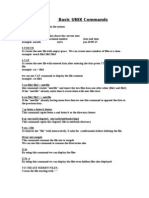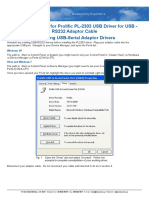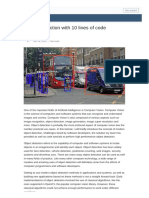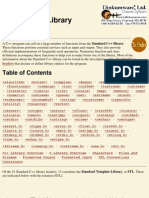0% found this document useful (0 votes)
24 views10 pagesLinux Basic Training
The document provides an introduction to Linux and covers various Linux distributions, basic Linux commands, user and group permissions, and file and directory permissions. It discusses commands for navigating files and directories, viewing and editing files, installing packages, and managing processes. The document is split across multiple pages and contains detailed explanations, examples, and syntax for many common Linux commands.
Uploaded by
spgethicalCopyright
© © All Rights Reserved
We take content rights seriously. If you suspect this is your content, claim it here.
Available Formats
Download as PDF, TXT or read online on Scribd
0% found this document useful (0 votes)
24 views10 pagesLinux Basic Training
The document provides an introduction to Linux and covers various Linux distributions, basic Linux commands, user and group permissions, and file and directory permissions. It discusses commands for navigating files and directories, viewing and editing files, installing packages, and managing processes. The document is split across multiple pages and contains detailed explanations, examples, and syntax for many common Linux commands.
Uploaded by
spgethicalCopyright
© © All Rights Reserved
We take content rights seriously. If you suspect this is your content, claim it here.
Available Formats
Download as PDF, TXT or read online on Scribd
/ 10

















































































